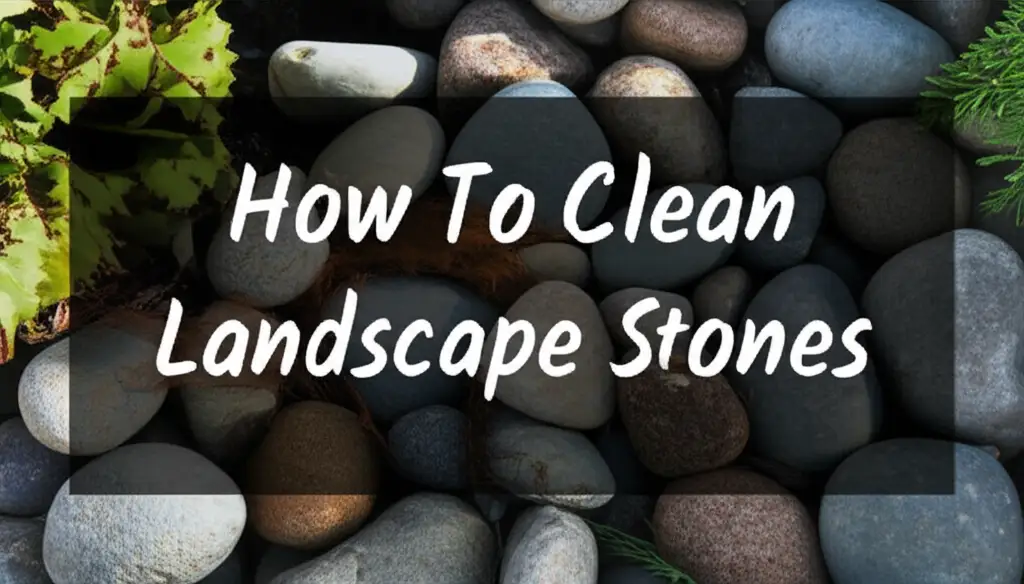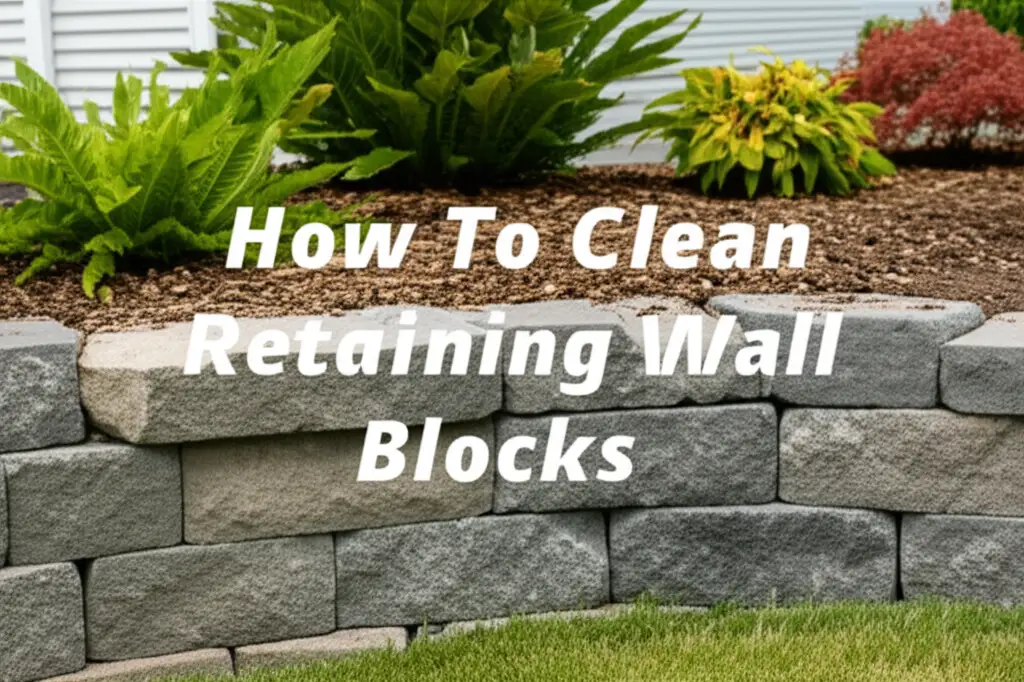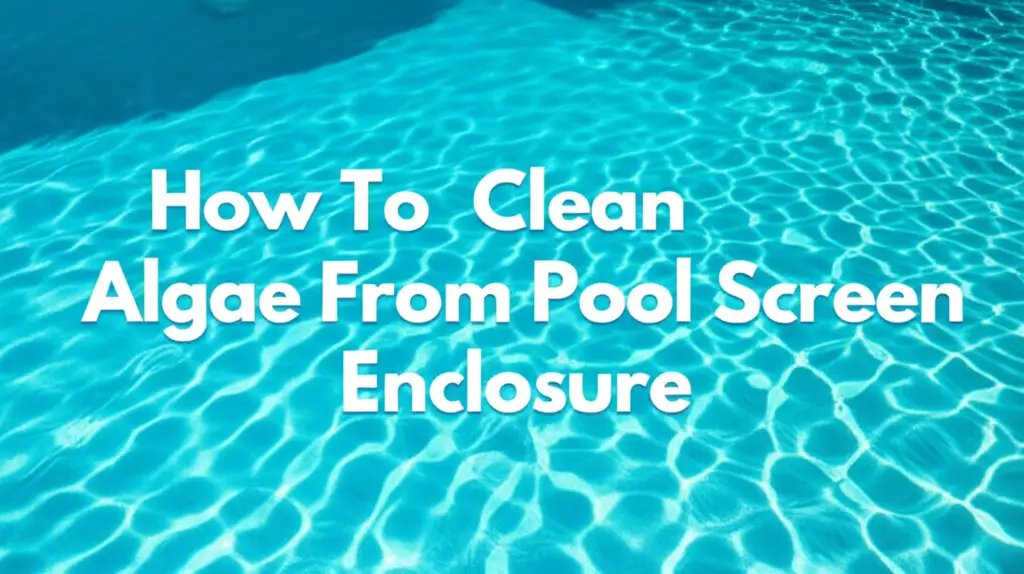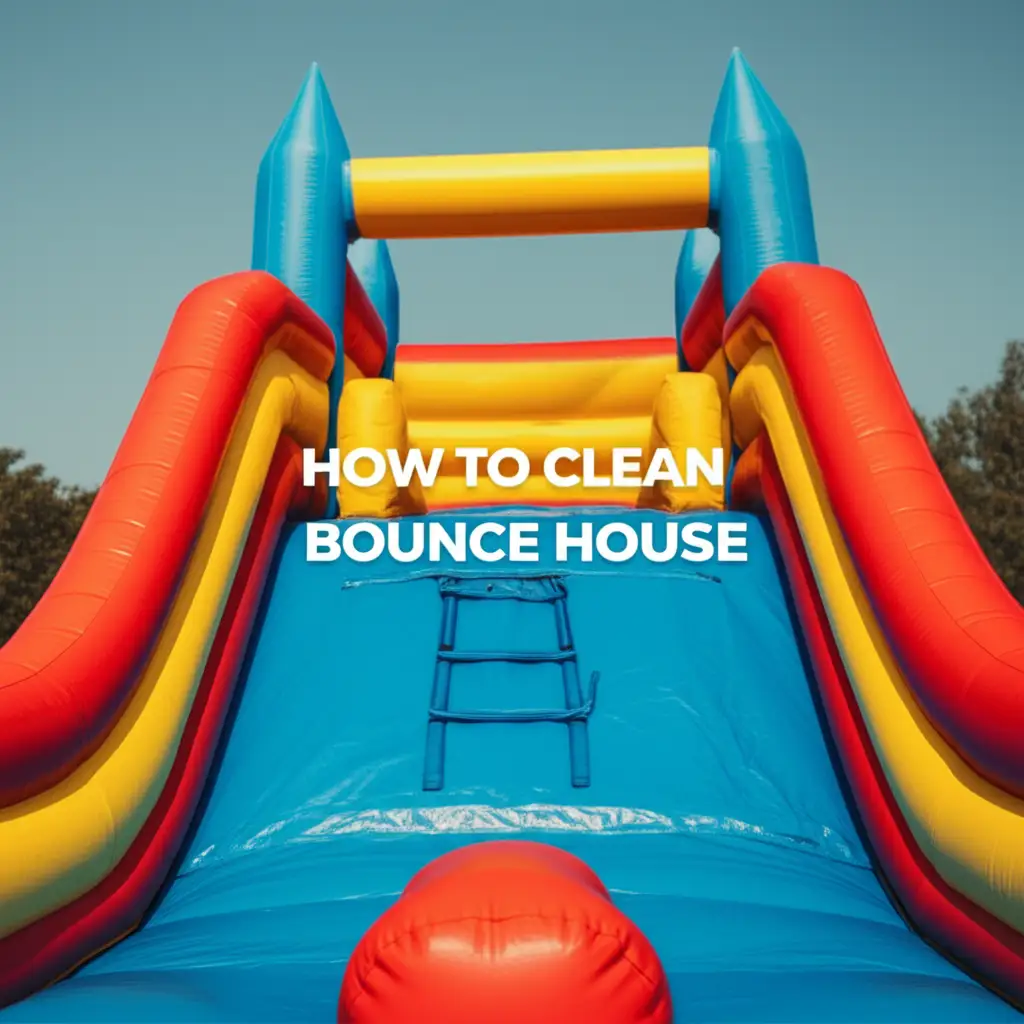· Outdoor Cleaning · 15 min read
How To Clean Boulders
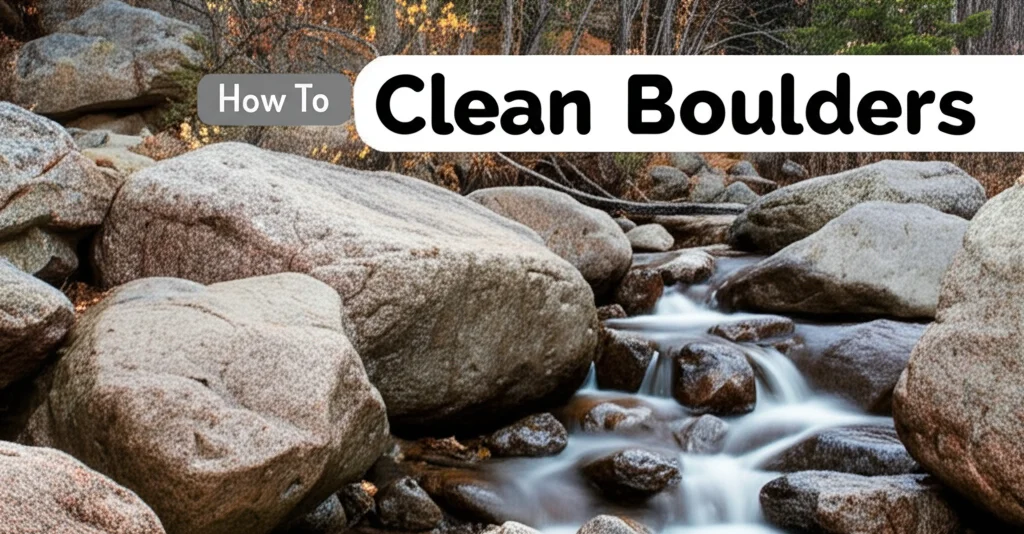
How to Clean Boulders: The Ultimate Guide for Pristine Landscape Stones
Boulders add natural beauty and dramatic focal points to any landscape, but over time, they can accumulate dirt, moss, algae, and other unwanted elements that diminish their appearance. Whether you have decorative boulders in your garden, functional rock retaining walls, or natural stone features on your property, knowing how to clean them properly is essential for maintaining their aesthetic appeal and structural integrity.
Cleaning boulders isn’t just about appearances—it can also prevent damage from biological growth and extend the life of your stone features. In this comprehensive guide, we’ll explore various methods for cleaning boulders of different types, addressing common issues like moss, algae, and stubborn stains, while preserving the natural beauty of these impressive landscape elements.
From gentle washing techniques to specialized treatments, we’ll cover everything you need to know to restore your boulders to their original splendor.
Key Takeaways:
- Different boulder types require specific cleaning methods to avoid damage
- Regular maintenance prevents difficult-to-remove buildup on landscape stones
- Both natural and chemical cleaning solutions can effectively clean boulders
- Pressure washing can be effective but must be used carefully to avoid damaging stone
- Preventative measures can keep boulders cleaner for longer periods
Quick Answer: To clean boulders, first identify the stone type, then remove loose debris with a brush or blower, wash with appropriate cleaning solution (mild soap for most stones), rinse thoroughly, and consider applying a sealant for ongoing protection.
Identifying Your Boulder Type Before Cleaning
Different Types of Landscape Boulders
Before attempting to clean any boulder, it’s crucial to identify what type of stone you’re dealing with. Different types of stone have varying levels of porosity, hardness, and chemical sensitivity that will determine the appropriate cleaning methods.
Granite Boulders: Extremely durable and dense, granite can withstand more aggressive cleaning methods including pressure washing and stronger cleaning solutions. Its low porosity makes it resistant to staining and biological growth.
Limestone Boulders: These are more porous and sensitive to acidic solutions. Limestone can easily be damaged by vinegar, citrus cleaners, or other acidic compounds that will etch the surface.
Sandstone Boulders: Highly porous and prone to absorbing stains and moisture. Sandstone requires gentler cleaning methods to prevent crumbling or degradation.
Slate Boulders: While fairly durable, slate can split along its natural layers if subjected to harsh pressure washing or freezing conditions after cleaning.
Quartzite Boulders: Similar to granite in durability but may have varying levels of porosity depending on the specific stone.
If you’re unsure about your boulder type, consult with a local landscaping professional or stone supplier who can help you identify it. The cleaning methods we’ll discuss can be adjusted based on your specific stone type to ensure you don’t cause accidental damage.
Basic Cleaning Methods for All Boulders
Initial Preparation and Debris Removal
Before applying any cleaning solutions, prepare your boulders by removing loose debris:
- Use a stiff brush (not wire) to sweep away loose dirt, leaves, and other debris from the boulder’s surface.
- For larger areas, a leaf blower can efficiently remove loose material from crevices and the surrounding area.
- For stubborn attached debris, use a wooden or plastic scraper—never metal tools that could scratch the stone’s surface.
- If possible, choose a cloudy day for cleaning to prevent cleaning solutions from drying too quickly on the stone surface.
Always wear protective gear including gloves and eye protection when cleaning boulders, especially when using cleaning solutions or pressure washing equipment. For larger boulders or extensive cleaning projects, consider how to clean a skylight or other elevated surfaces for safety techniques that might apply.
General Soap and Water Cleaning
For regular maintenance cleaning of most boulder types, a simple soap and water solution is often sufficient:
- Fill a bucket with warm water and add a small amount of pH-neutral dish soap or stone cleaner.
- Wet the boulder thoroughly with clean water first to prevent the soap solution from soaking too deeply into porous stones.
- Use a soft-bristled brush to apply the soapy solution, working in small sections and using circular motions.
- Pay special attention to visibly dirty areas but avoid excessive scrubbing in one spot.
- Rinse thoroughly with clean water, ensuring no soap residue remains which could attract more dirt.
This gentle method is safe for most stone types and should be your first approach before trying more aggressive techniques. For delicate stone cleaning in other contexts, see methods for how to clean a rock without damaging it.
How to Remove Moss and Algae from Boulders
Natural Removal Methods
Moss and algae not only affect the appearance of boulders but can also cause deterioration over time as they trap moisture against the stone surface. Here are some natural methods to remove these biological growths:
Boiling Water Method:
- Boil a large pot of water
- Carefully pour it directly onto moss or algae-covered areas
- Scrub with a stiff brush while the stone is still warm
- Repeat as necessary until all growth is removed
Baking Soda Paste:
- Mix baking soda with enough water to form a thick paste
- Apply to moss-covered areas and let sit for 20-30 minutes
- Scrub with a brush and rinse thoroughly
- This method is particularly effective for how to clean moss off boulders in shady areas
Salt Treatment (for non-garden areas):
- Apply a generous amount of salt directly to moss
- Let it sit for 1-2 days
- Scrub and rinse the area completely
- Note: Avoid this method if the boulder is near plants you wish to preserve
For stubborn growths that have been present for years, you might need to repeat these treatments several times. Regular maintenance cleaning will prevent such heavy buildup in the future.
Commercial Products and Chemical Solutions
When natural methods aren’t sufficient, commercial products designed specifically for stone cleaning can be effective:
Oxygen Bleach Solutions:
- Dissolve oxygen bleach (not chlorine bleach) in warm water according to package directions
- Apply to the boulder and allow to sit for 15-20 minutes
- Scrub with a brush and rinse thoroughly
- This solution is safer for surrounding plants than more harsh chemicals
Commercial Stone Cleaners:
- Purchase a stone-specific cleaner appropriate for your boulder type
- Apply according to manufacturer’s directions
- Most require application, brief waiting period, scrubbing, and thorough rinsing
- These products often contain inhibitors to prevent future growth
Vinegar Solution (for non-limestone/marble boulders only):
- Mix equal parts white vinegar and water
- Apply to affected areas and wait 15 minutes
- Scrub and rinse thoroughly
- CAUTION: Never use vinegar on limestone, marble, or other calciferous stones as it will cause etching
When using chemical cleaners, always protect surrounding plants by thoroughly wetting them first and covering with plastic sheeting during the cleaning process. For other specialized cleaning techniques that might apply to outdoor situations, consider reading about how to clean aluminum railings for tips on cleaning outdoor fixtures.
Pressure Washing Boulders: Techniques and Precautions
When Pressure Washing Is Appropriate
Pressure washing can be an efficient way to clean larger boulders or extensive stone landscapes, but it must be approached with caution:
Suitable Stone Types:
- Granite and other igneous rocks typically handle pressure washing well
- Dense quartzite can usually withstand moderate pressure
- Well-cemented sandstone may tolerate low-pressure washing
Inappropriate Stone Types:
- Soft sedimentary stones like some sandstones
- Weathered or already damaged stones
- Thinly layered stones like some slate varieties
- Stones with existing cracks or fissures
Before pressure washing any boulder, test in an inconspicuous area using the lowest pressure setting. If you notice any stone particles coming loose or surface damage, stop immediately and use gentler methods instead.
Best Practices for Pressure Washing Stone
If you determine pressure washing is suitable for your boulders, follow these guidelines:
- Use the appropriate nozzle—typically a 25 to 40-degree fan nozzle provides good cleaning power without concentrating too much pressure in one spot.
- Maintain a distance of at least 12-18 inches between the nozzle and the stone surface.
- Keep the spray moving constantly rather than focusing on one area.
- Work from top to bottom to avoid streaking.
- Consider using a surface cleaner attachment for large, flat boulder surfaces.
- For enhanced cleaning, use a mild detergent solution in the pressure washer’s soap dispenser.
Never exceed 1500-2000 PSI when cleaning natural stone. Higher pressures can damage even seemingly hard stones by forcing water into small cracks or removing the natural patina that protects the stone.
For more information on pressure washing techniques that might apply to outdoor cleaning, you might find tips in guides for how to clean canvas awnings or other outdoor surfaces.
Removing Stains and Discoloration from Boulders
Types of Common Stains and Their Solutions
Different types of stains require specific treatment approaches:
Rust Stains:
- Apply a poultice made from a commercial rust remover and absorbent material like diatomaceous earth
- Cover with plastic wrap and tape down the edges
- Allow to sit for 24-48 hours
- Remove, rinse thoroughly, and repeat if necessary
Organic Stains (leaves, berries, bark):
- Create a solution of 12% hydrogen peroxide mixed with a few drops of ammonia
- Apply to the stain and cover with plastic wrap
- Let sit for several hours
- Rinse thoroughly
Oil or Grease Stains:
- Blot up as much excess oil as possible with paper towels
- Apply cat litter or corn starch to absorb remaining oil
- Mix dish soap with warm water and scrub the area
- For stubborn oil stains, try a poultice made with acetone (for non-polished stones only)
Hard Water Mineral Deposits:
- Apply white vinegar to the affected area (except on limestone or marble)
- Let sit for 15 minutes
- Scrub with a nylon brush
- Rinse thoroughly
When dealing with unknown stains, always start with the gentlest cleaning method and progress to stronger solutions only if necessary. For specialized stain removal techniques you might adapt, see guides like how to clean artillery fungus for stubborn biological stains.
Poultice Methods for Deep Stains
For particularly stubborn or deep stains that surface cleaning won’t remove, a poultice treatment can draw out contaminants:
Basic Poultice Recipe:
- Mix an appropriate cleaning agent (varies based on stain type) with an absorbent material like kaolin clay, diatomaceous earth, or even flour
- Add just enough water to create a paste with the consistency of peanut butter
- Apply a 1/4-inch thick layer over the stain, extending slightly beyond its edges
- Cover with plastic wrap and seal the edges with tape
- Allow to dry completely (usually 24-48 hours)
- Remove the dried poultice and rinse the area thoroughly
The poultice works by drawing the stain up into the absorbent material as it dries. For extremely deep stains, multiple applications may be necessary. This method is particularly effective for oil and rust stains on porous stones.
Sealing and Protecting Boulders After Cleaning
When to Seal Landscape Boulders
Not all boulders require or benefit from sealing, but it can be beneficial in certain circumstances:
Consider sealing when:
- The boulder is in a high-traffic area where it’s frequently touched
- Your landscape stone is highly porous (like some sandstones)
- The boulder is used as a water feature or fountain
- You want to enhance the natural color and pattern of the stone
- The boulder is located under trees that drop sap or berries
- You live in an area with harsh weather conditions
Avoid sealing when:
- The boulder is part of a natural ecosystem (moss or lichen growth is desired)
- The stone is very dense and non-porous like some granites
- The boulder is in a location where chemical applications could harm surrounding plants
- You prefer the natural weathering process of the stone
Before applying any sealer, ensure the boulder is completely clean and thoroughly dry. Most stone sealers require at least 24-48 hours of drying time after cleaning.
Types of Stone Sealers and Application Methods
When you decide to seal your boulders, choose the appropriate type of sealer:
Penetrating Sealers:
- Soak into the stone’s pores to provide protection without changing appearance
- Best for natural looks and most landscape applications
- Typically last 3-5 years depending on exposure
- Allow the stone to “breathe” which prevents moisture buildup
Enhancing Sealers:
- Similar to penetrating sealers but darken the stone to enhance colors
- Make stone appear as if it’s wet even when dry
- Good for bringing out patterns and veining
- Last about 3-5 years in outdoor conditions
Topical Sealers:
- Create a protective film on the surface
- Can add shine or matte finish
- More commonly used for interior stones
- Typically not recommended for outdoor boulders as they can peel over time
Application Process:
- Ensure the boulder is completely clean and dry (wait at least 24 hours after cleaning)
- Check weather forecasts for a period of 24-48 hours without rain
- Apply the sealer with a pump sprayer, roller, or brush according to manufacturer’s directions
- Work in small sections, applying evenly
- For most penetrating sealers, wipe off excess after 5-10 minutes
- Allow the recommended curing time (typically 24-48 hours) before exposure to water
For best results, reapply sealers according to the manufacturer’s recommended schedule, which is typically every 3-5 years for outdoor boulders. Regular maintenance cleaning between sealant applications will extend their effectiveness.
Specialized Cleaning Techniques for Specific Situations
Cleaning Fire Pit and Fireplace Boulders
Boulders used in fire features require special attention due to smoke, soot, and high-temperature exposure:
- Allow the stones to cool completely before cleaning
- Brush away loose ash and debris with a stiff nylon brush
- For soot and smoke stains:
- Mix a solution of TSP (trisodium phosphate) according to package directions
- Apply with a brush and let sit for 15-20 minutes
- Scrub with a brush and rinse thoroughly
- For stubborn creosote deposits:
- Use a commercial fireplace cleaner designed for stone
- Follow the manufacturer’s directions carefully
- Rinse thoroughly and allow to dry completely before using the fire feature again
For interior fireplaces, you might also find useful information in guides about how to clean the inside of a firebox to adapt techniques for your fire feature boulders.
Cleaning and Preparing Newly Excavated Boulders
If you’ve recently excavated boulders from your property or purchased unprocessed stones:
- Remove excess soil by rinsing with a garden hose
- Use a stiff brush to remove adhered clay or dirt
- For stubborn soil deposits:
- Soak the boulder with water and let sit for an hour
- Scrub with a brush and rinse
- Repeat as necessary
- Check for how to clean rocks from dirt for additional techniques
- Allow the boulder to dry completely before placing in your landscape
- Consider applying a sealer if the stone will be a prominent feature
Newly excavated boulders often reveal beautiful colors and patterns once properly cleaned. Take your time with the process to avoid damaging the natural beauty of the stone.
Regular Maintenance to Keep Boulders Clean
Seasonal Cleaning Schedule
Establishing a regular maintenance schedule will prevent major buildup and keep your boulders looking their best:
Spring Maintenance:
- Remove winter debris and fallen leaves
- Check for frost damage or cracking
- Rinse off salt residue from de-icing (if applicable)
- Apply basic soap and water cleaning
Summer Maintenance:
- Remove bird droppings promptly
- Rinse off pollen and dust accumulation
- Check for insect nests in crevices
- Monitor for new algae growth in shaded areas
Fall Maintenance:
- Remove fallen leaves regularly
- Clean sap and berry stains promptly
- Consider applying sealer before winter (if due)
- Check drainage around boulder placements
Winter Maintenance:
- Avoid using salt-based de-icers near boulders
- Remove snow buildup from horizontal surfaces
- Check for ice accumulation in cracks
For areas with specific seasonal challenges, adapt your maintenance schedule accordingly. Regular light cleaning prevents the need for more intensive cleaning methods later.
Preventative Measures
Taking preventative steps can reduce cleaning frequency and preserve your boulders’ appearance:
- Improve drainage around boulder placements to prevent standing water
- Trim overhanging branches to reduce organic debris
- Consider landscape fabric around the base to reduce splashing soil onto boulders
- Apply appropriate sealer on schedule
- Use drip irrigation rather than sprinklers near boulders to reduce mineral deposits
- Install boulders at slight angles to promote water runoff
- Consider using copper strips above boulders to prevent moss growth (copper ions inhibit moss)
With proper placement and regular maintenance, your landscape boulders can remain attractive features with minimal cleaning requirements. For more on dealing with outdoor cleaning challenges, readers might find useful information in guides like how to clean bluestone pavers for techniques that can be adapted.
Frequently Asked Questions
How often should I clean outdoor landscape boulders?
Most landscape boulders benefit from a thorough cleaning once or twice a year, typically in spring and fall. However, more frequent light cleanings may be necessary in areas with heavy tree cover, high pollution, or significant bird activity. Watch for signs of moss or algae growth, which indicate it’s time for cleaning.
Can I use bleach to clean boulders?
Chlorine bleach should generally be avoided on natural stone as it can discolor and damage many types of boulders. If you need a strong cleaner, oxygen bleach (sodium percarbonate) is a much safer alternative that effectively removes organic stains and biological growth without damaging the stone or surrounding plants.
Will pressure washing damage my boulders?
Pressure washing can damage certain types of stone, particularly softer varieties like sandstone or weathered limestone. If pressure washing is necessary, use the lowest effective pressure setting, maintain adequate distance from the stone surface, and use wide-angle spray patterns. Always test in an inconspicuous area first.
How can I prevent moss from growing back on my boulders?
After cleaning, you can prevent moss regrowth by improving sunlight exposure, ensuring proper drainage around boulders, applying a stone sealer, or installing copper strips above the boulders. Regular maintenance cleaning will also prevent moss from becoming established.
Is there a natural way to clean stained boulders without chemicals?
Yes, several natural methods can be effective: a paste of baking soda and water works well for general cleaning and light stains; boiling water can remove moss; and sunlight exposure can naturally bleach some organic stains. For oil stains, absorbing with kitty litter or corn starch followed by dish soap cleaning often works well.
Should I seal my boulders after cleaning them?
Sealing is beneficial for many types of landscape boulders, particularly more porous varieties or those in high-traffic areas. A good quality penetrating sealer can protect against staining and biological growth while making future cleaning easier. However, very dense stones like granite may not benefit significantly from sealing.
Final Thoughts
Maintaining clean, attractive boulders in your landscape not only enhances the visual appeal of your outdoor space but also preserves these natural elements for years to come. While cleaning methods vary depending on the type of stone and the specific issue being addressed, following the guidelines in this article will help you care for your landscape boulders effectively and safely. Remember that regular maintenance prevents the need for more aggressive cleaning methods, and always start with the gentlest approach before moving to stronger solutions. With proper care, your landscape boulders will continue to serve as striking focal points in your outdoor environment, providing natural beauty and character to your property.
By developing a consistent cleaning and maintenance routine that aligns with your specific boulder types and environmental conditions, you’ll ensure these impressive landscape features remain pristine and visually appealing throughout the seasons. Whether you’re dealing with moss-covered boulders in a shady garden or sun-bleached stones in a rockery, the right cleaning approach will restore and preserve their natural beauty for years to come.
For more specialized cleaning guides and tips for maintaining other elements of your outdoor space, explore our website for comprehensive resources on everything from how to clean bird toys to how to clean aluminum chairs and create a completely polished outdoor environment.
- boulder cleaning
- rock cleaning
- landscape maintenance
- algae removal
- moss removal

